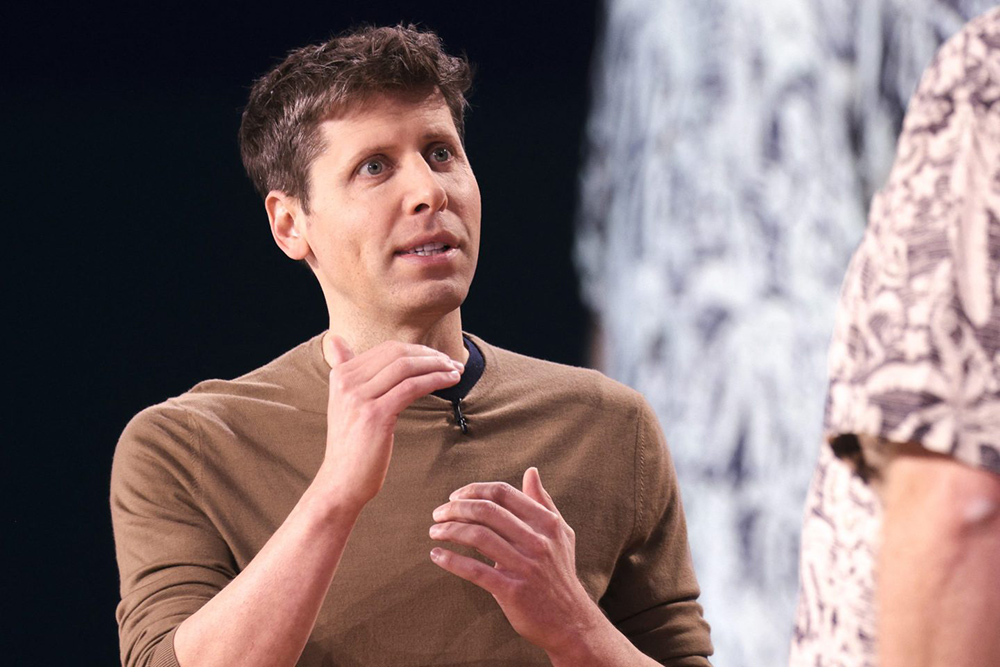
OpenAI正发布一款新人工智能模型,内部称为“草莓”,可以执行一些类似人类的推理任务,寄希望于在竞争激烈的市场中保持领先地位。
该公司周四在一篇博文中说,这款名为“o1”的新模型在回应用户询问之前,会花更多时间计算答案。有了这个模型,OpenAI的工具应该能够解决多步骤问题,包括复杂的数学和编码问题。
该公司表示:“作为一个早期模型,它还不具备很多使ChatGPT变得有用的功能,比如浏览网页获取信息、上传文件和图片等。但对于复杂推理任务来说,这是一项重大进步,代表了人工智能能力的新水平。鉴于此,我们将计数器重置回1,并将该系列命名为OpenAI o1。”
付费ChatGPT Plus和团队用户将于周四通过OpenAI的热门聊天机器人访问该模型的预览版。彭博社此前报道称,该公司最快将于本周发布这款新模型。
该模型发布之际,总部位于旧金山的OpenAI正寻求筹集数十亿美元的资金,并在开发更复杂的人工智能系统的竞赛中面临着日益激烈的竞争。OpenAI并不是唯一一家致力于开发此类功能的公司;竞争对手Anthropic和谷歌也在其先进的人工智能模型中标榜了“推理”能力。
OpenAI在其博文中举例说明了该人工智能模型对编码、英语和数学等主题的问题的回答,并要求它解决一个简单的填字游戏。OpenAI的研究科学家诺姆·布朗(Noam Brown)在X上发表了一系列文章,表示该公如今发布这个模型的预览版,部分原因是为了了解人们是如何使用它的,以及它在哪些方面需要改进。
使用OpenAI更新的人工智能系统的体验将与人们对该公司聊天机器人ChatGPT的期望有所不同。在对用户的提示做出回应之前,新软件会暂停几秒钟,在用户看不见的幕后,它会考虑一些相关的提示,然后总结出似乎是最好的答案。这种技术有时被称为“思维链”提示。
一段时间以来,OpenAI一直致力于让计算机执行多步骤操作。例如,在2023年5月,该公司发布了一篇博文和一篇随附的研究论文,介绍了其为提高人工智能系统解决数学问题的能力所做的努力。根据这篇论文,该公司训练一个模型的方法是,奖励它在得出答案过程中的每一个正确步骤,而不仅仅是奖励它生成了准确答案。(财富中文网)
译者:中慧言-王芳
OpenAI正发布一款新人工智能模型,内部称为“草莓”,可以执行一些类似人类的推理任务,寄希望于在竞争激烈的市场中保持领先地位。
该公司周四在一篇博文中说,这款名为“o1”的新模型在回应用户询问之前,会花更多时间计算答案。有了这个模型,OpenAI的工具应该能够解决多步骤问题,包括复杂的数学和编码问题。
该公司表示:“作为一个早期模型,它还不具备很多使ChatGPT变得有用的功能,比如浏览网页获取信息、上传文件和图片等。但对于复杂推理任务来说,这是一项重大进步,代表了人工智能能力的新水平。鉴于此,我们将计数器重置回1,并将该系列命名为OpenAI o1。”
付费ChatGPT Plus和团队用户将于周四通过OpenAI的热门聊天机器人访问该模型的预览版。彭博社此前报道称,该公司最快将于本周发布这款新模型。
该模型发布之际,总部位于旧金山的OpenAI正寻求筹集数十亿美元的资金,并在开发更复杂的人工智能系统的竞赛中面临着日益激烈的竞争。OpenAI并不是唯一一家致力于开发此类功能的公司;竞争对手Anthropic和谷歌也在其先进的人工智能模型中标榜了“推理”能力。
OpenAI在其博文中举例说明了该人工智能模型对编码、英语和数学等主题的问题的回答,并要求它解决一个简单的填字游戏。OpenAI的研究科学家诺姆·布朗(Noam Brown)在X上发表了一系列文章,表示该公如今发布这个模型的预览版,部分原因是为了了解人们是如何使用它的,以及它在哪些方面需要改进。
使用OpenAI更新的人工智能系统的体验将与人们对该公司聊天机器人ChatGPT的期望有所不同。在对用户的提示做出回应之前,新软件会暂停几秒钟,在用户看不见的幕后,它会考虑一些相关的提示,然后总结出似乎是最好的答案。这种技术有时被称为“思维链”提示。
一段时间以来,OpenAI一直致力于让计算机执行多步骤操作。例如,在2023年5月,该公司发布了一篇博文和一篇随附的研究论文,介绍了其为提高人工智能系统解决数学问题的能力所做的努力。根据这篇论文,该公司训练一个模型的方法是,奖励它在得出答案过程中的每一个正确步骤,而不仅仅是奖励它生成了准确答案。(财富中文网)
译者:中慧言-王芳
OpenAI is releasing a new artificial intelligence model known internally as “Strawberry” that can perform some human-like reasoning tasks, as it looks to stay at the top of a crowded market of rivals.
The new model, called o1, is designed to spend more time computing the answer before responding to user queries, the company said in a blog post Thursday. With the model, OpenAI’s tools should be able to solve multi-step problems, including complicated math and coding questions.
“As an early model, it doesn’t yet have many of the features that make ChatGPT useful, like browsing the web for information and uploading files and images,” the company said. “But for complex reasoning tasks this is a significant advancement and represents a new level of AI capability. Given this, we are resetting the counter back to 1 and naming this series OpenAI o1.”
A preview version of the model will be available through OpenAI’s popular chatbot, ChatGPT, to paid Plus and Team users on Thursday. Bloomberg previously reported the company could release the new model as soon as this week.
The model’s release comes as San Francisco-based OpenAI is looking to raise billions in funding and faces heightened competition in the race to develop ever more sophisticated artificial intelligence systems. OpenAI isn’t the only company working on such capabilities; competitors Anthropic and Google have also touted “reasoning” skills with their advanced AI models.
In its blog post, OpenAI gave examples of the AI model’s responses to questions on topics including coding, English, and math, and asked it to solve a simple crossword puzzle. In a series of posts on X, Noam Brown, a research scientist at OpenAI, said the company is releasing the model in preview now in part to get a sense for how people use it, and where it needs to be improved.
The experience of using OpenAI’s updated AI system will differ somewhat from what people have come to expect with ChatGPT, the company’s chatbot. Before responding to a user’s prompt, the new software will pause for a matter of seconds while, behind the scenes and invisible to the user, it considers a number of related prompts and then summarizes what appears to be the best response. This technique is sometimes referred to as “chain of thought” prompting.
OpenAI has been working to get computers to carry out multi-step actions for some time. In May 2023, for instance, the company released a blog post and an accompanying research paper about its efforts to improve AI systems’ abilities to solve math problems. According to the paper, the company trained a model by rewarding it for each correct step in the process toward coming up with an answer to a problem, rather than by just rewarding it for generating an accurate answer.






